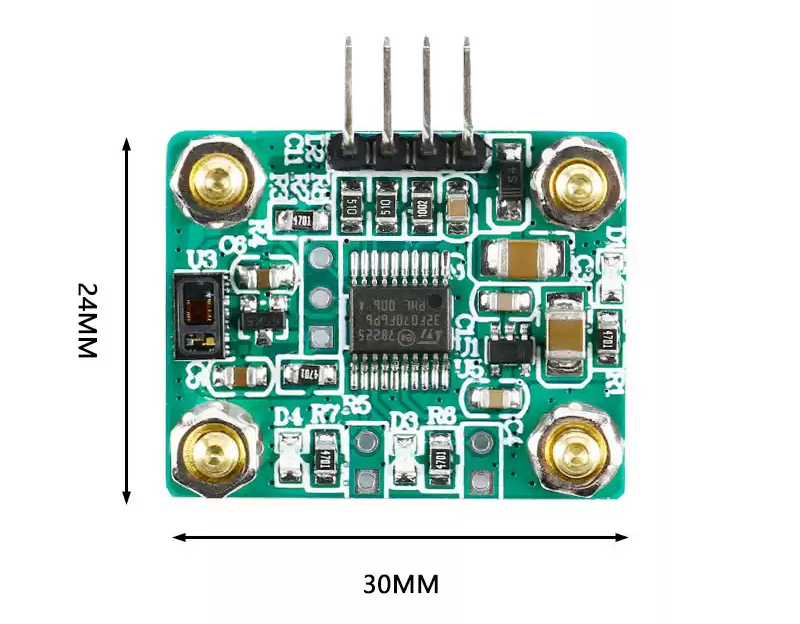The MAX30102 is an integrated biosensor module designed for pulse oximetry and heart rate monitoring. It incorporates a red LED, an infrared LED, a photodetector, optical components, and low-noise electronics with ambient light suppression.
Additionally, the module supports a software shutdown mode, with standby current approaching zero, ensuring continuous power supply readiness.
The MAX30102 features a glass cover design that effectively eliminates external and internal optical interference, delivering enhanced reliability.

Basic Information of the MAX30102
- PCB Size: 30mm × 24mm (Length × Width)
- Mounting Hole Spacing: 23mm × 16mm (Length × Width)
- Power Supply: 5V
- Control Method: AT Commands
- Main Components: Sensor, Microcontroller, Power Supply
- Heart Rate Measurement Range: 20–200 beats per minute
- Blood Oxygen Measurement Range: 50%–100%
Output Modes of the MAX30102
- Serial Output (can connect via USB to TTL converter for direct data reading through the computer serial port).
- Alert Signal Output: 0V or 3.3V
- Alert LED on: Outputs 3.3V
- Alert LED off: Outputs 0V
Function Description
- Blood Oxygen Alert LED
- Blood Oxygen Alert Signal Output (0V or 3.3V)
- Power LED
- Heart Rate Alert Signal Output (0V or 3.3V)
- Heart Rate Alert LED
- Blood Oxygen and Heart Rate Sensor (Needs to be touched for measurement)
- 5V Power Supply
- Serial Output (GND, RX, TX)
Connection Instructions of the MAX30102
- TXD: Transmit data pin, typically represents the device’s transmitting end. For proper communication, TXD must be connected to the RXD of another device.
- RXD: Receive data pin, typically represents the device’s receiving end. For proper communication, RXD must be connected to the TXD of another device.
Note: During normal communication, the TXD of this device always connects to the RXD of the remote device.




Reviews
There are no reviews yet.